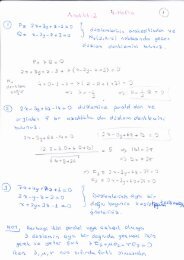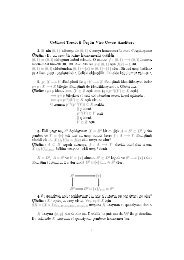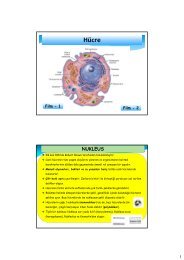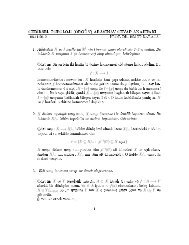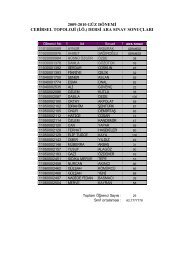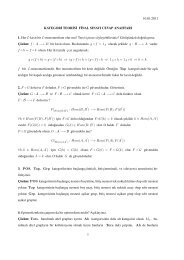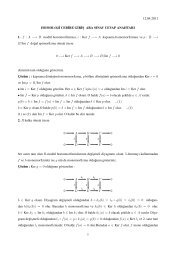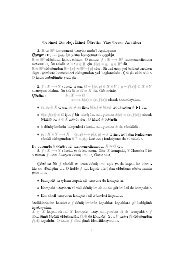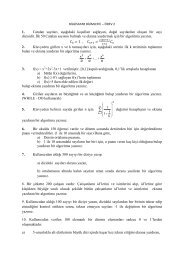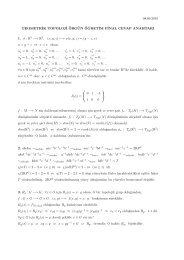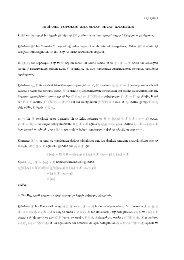MCS 351 ENGINEERING MATHEMATICS SOLUTION OF ...
MCS 351 ENGINEERING MATHEMATICS SOLUTION OF ...
MCS 351 ENGINEERING MATHEMATICS SOLUTION OF ...
Create successful ePaper yourself
Turn your PDF publications into a flip-book with our unique Google optimized e-Paper software.
15. We shall remember Example 4:<br />
∫<br />
C<br />
dz<br />
z 2 = 0<br />
where C is the unit circle. This result does not follow from Cauchy’s theorem, because f(z) = 1<br />
z 2<br />
not analytic at z = 0. Hence the condition that f be analytic in D is sufficient rather than necessary for<br />
Cauchy’s integral theorem to be true.<br />
Then they can be deformed each other. So integral of f is 0.<br />
16. İf C is the unit circle, ∫ f(z)dz = 3<br />
İf C is |z| = 2, ∫ f(z)dz = 5.<br />
is<br />
f isn’t analytic in the annulus 1 < |z| < 2 because of the principle of deformation of path.<br />
17.<br />
a) C 1 : x : 0 → π and y : 0 → π<br />
y = x =⇒ dy = dx.<br />
İf z = x + iy, dz = dx + idy.<br />
=⇒ ∫ C 1<br />
cos zdz = ∫ cos(x + iy)(dx + idy) = ∫ π<br />
0 cos((1 + i)x)(1 + i)dx = sin((1 + i)x)∣ ∣ π 0 =<br />
sin((1 + i)π) − sin 0 = sin(π + iπ) = − sin(iπ).<br />
b) ∫ C cos zdz = ∫ C 2<br />
+ ∫ C 3<br />
C 2 : x : 0 → π and y = 0 =⇒ dy = 0<br />
İf z = x + iy, dz = dx + idy = dx.<br />
=⇒ ∫ C cos zdz = ∫ π<br />
0 cos(x + iy)dx = ∫ π<br />
0 cos xdx = sin x∣ ∣ π 0 = sin π = 0<br />
C 3 : x = π =⇒ dx = 0 and y : 0 → π<br />
37



